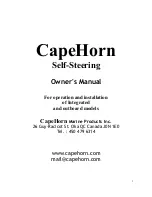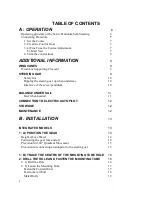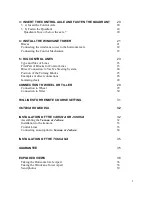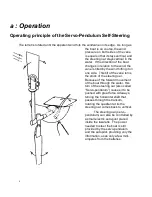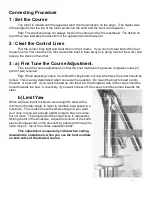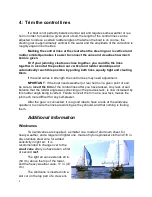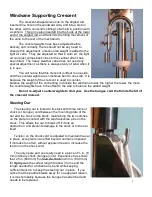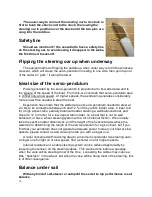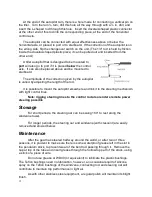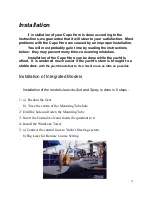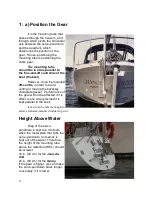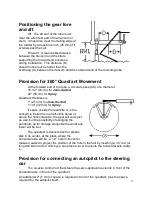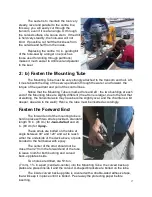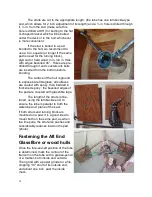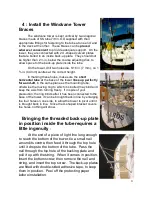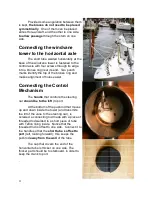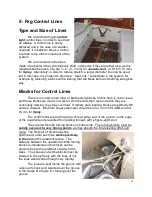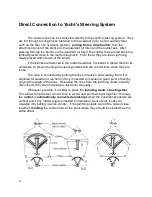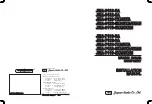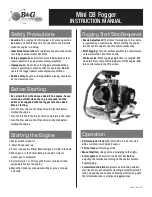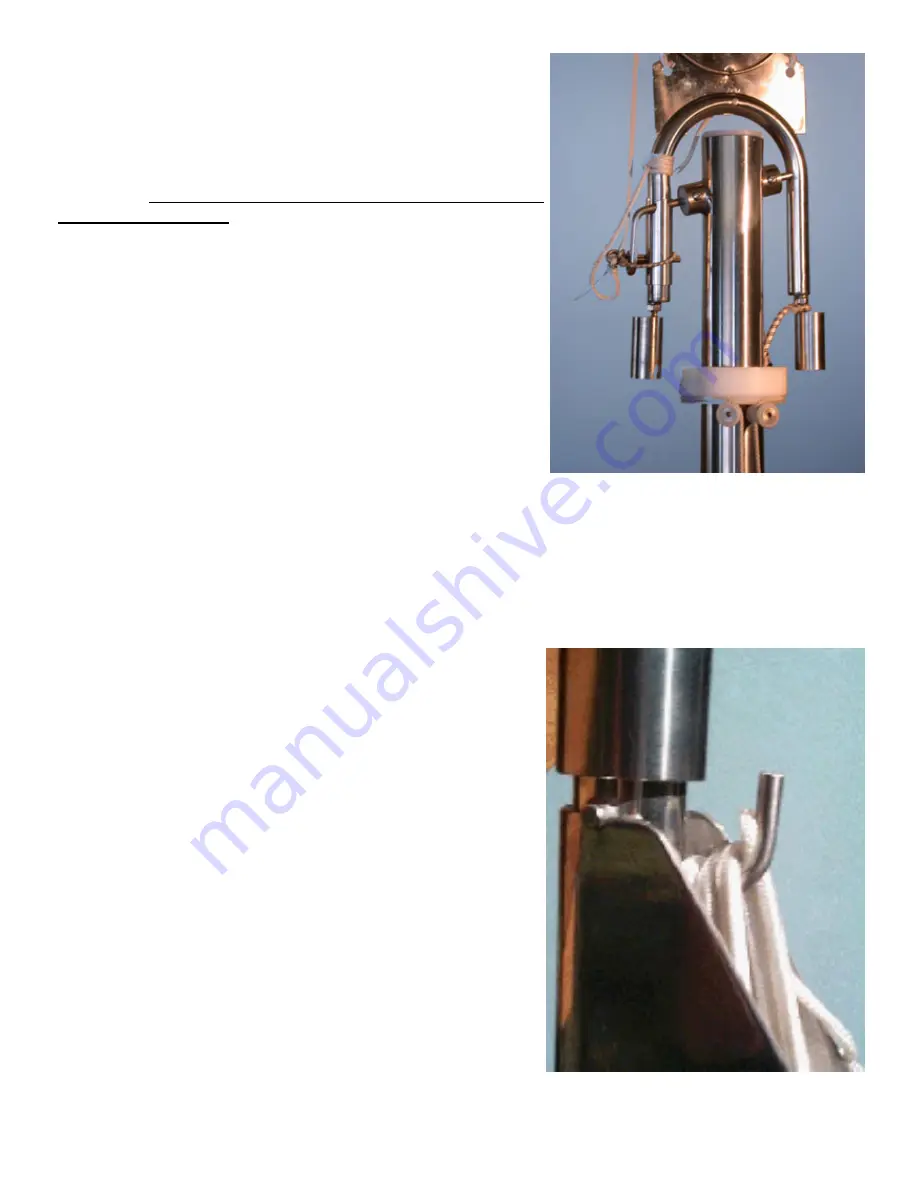
9
Windvane Supporting Crescent
The crescent-shaped piece sits on the angled rod,
inserted in a hole on the windward side, and into a slot on
the other, with a concentric sliding collar held in position with
a split pin. This pin is also inserted into the hook at the lower
end of the angled rod, and transmits the tilting movement of
the vane to the rest of the mechanism.
The counterweights have been adjusted before
delivery and normally, there should not be any need to
change this adjustment, unless some weight is added to the
light air vane. They are adjusted so that in calm air, the light
air vane just comes back close to the vertical after it has
been tilted. The heavy weather vane does not need any
special adjustment, as there is always plenty of wind when it
is in use.
You will notice that this crescent is offset to one side,
and the counterweights are sometimes bent to one side : it is
because the weight of the crescent is used to counter-
balance the weight of the connecting rod inside the windvane tower; the higher the tower, the more
the counterweights have to be offset to the side to balance the added weight.
Do not re-adjust counterweights to limit yaw. Use the bungee cord that limits the tilt of
the crescent instead.
Steering Oar
The steering oar is linked to its stock with three turns of
shock (or bungee) cord between the mounting plate of the
oar and the hook on the stock, maintaining the two notches
on the plate in contact with the two transverse pins on the
stock. This allows the oar to break off if it hits an
obstruction, and prevents damage to the stock or to the oar
itself.
Tension on the shock cord is adjusted to maintain the oar
in place, except when an effort beyond normal is imposed.
If it breaks too often, without apparent reason, increase the
tension on the shock cord.
The only spare part you really need is a piece of ¼ in. (6
mm) ordinary shock (bungee) cord. Experience has shown
that 25 in.(640 mm) for
Jean-du-Sud
and 33 in. (840 mm)
for
Spray
was the correct length to allow 3 turns and the
length needed for a fisherman’s bend while keeping
sufficient tension to keep the steering oar in place. If you
notice that the paddle breaks away for no apparent reason,
it is most probably because the bungee has stretched and
needs to be replaced.



